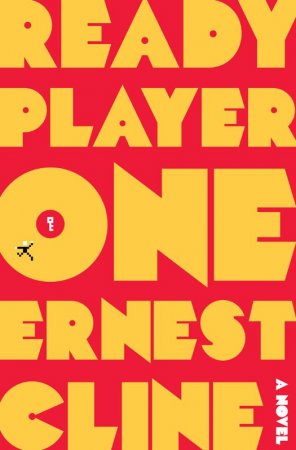- Home
- Ernest Cline
Ready Player One
Ready Player One Read online
Everyone my age remembers where they were and what they were doing when they first heard about the contest. I was sitting in my hideout watching cartoons when the news bulletin broke in on my video feed, announcing that James Halliday had died during the night.
I’d heard of Halliday, of course. Everyone had. He was the videogame designer responsible for creating the OASIS, a massively multiplayer online game that had gradually evolved into the globally networked virtual reality most of humanity now used on a daily basis. The unprecedented success of the OASIS had made Halliday one of the wealthiest people in the world.
At first, I couldn’t understand why the media was making such a big deal of the billionaire’s death. After all, the people of Planet Earth had other concerns. The ongoing energy crisis. Catastrophic climate change. Widespread famine, poverty, and disease. Half a dozen wars. You know: “dogs and cats living together … mass hysteria!” Normally, the newsfeeds didn’t interrupt everyone’s interactive sitcoms and soap operas unless something really major had happened. Like the outbreak of some new killer virus, or another major city vanishing in a mushroom cloud. Big stuff like that. As famous as he was, Halliday’s death should have warranted only a brief segment on the evening news, so the unwashed masses could shake their heads in envy when the newscasters announced the obscenely large amount of money that would be doled out to the rich man’s heirs.
But that was the rub. James Halliday had no heirs.
He had died a sixty-seven-year-old bachelor, with no living relatives and, by most accounts, without a single friend. He’d spent the last fifteen years of his life in self-imposed isolation, during which time—if the rumors were to be believed—he’d gone completely insane.
So the real jaw-dropping news that January morning, the news that had everyone from Toronto to Tokyo crapping in their cornflakes, concerned the contents of Halliday’s last will and testament, and the fate of his vast fortune.
Halliday had prepared a short video message, along with instructions that it be released to the world media at the time of his death. He’d also arranged to have a copy of the video e-mailed to every single OASIS user that same morning. I still remember hearing the familiar electronic chime when it arrived in my inbox, just a few seconds after I saw that first news bulletin.
His video message was actually a meticulously constructed short film titled Anorak’s Invitation. A famous eccentric, Halliday had harbored a lifelong obsession with the 1980s, the decade during which he’d been a teenager, and Anorak’s Invitation was crammed with obscure ’80s pop culture references, nearly all of which were lost on me the first time I viewed it.
The entire video was just over five minutes in length, and in the days and weeks that followed, it would become the most scrutinized piece of film in history, surpassing even the Zapruder film in the amount of painstaking frame-by-frame analysis devoted to it. My entire generation would come to know every second of Halliday’s message by heart.
Anorak’s Invitation begins with the sound of trumpets, the opening of an old song called “Dead Man’s Party.”
The song plays over a dark screen for the first few seconds, until the trumpets are joined by a guitar, and that’s when Halliday appears. But he’s not a sixty-seven-year-old man, ravaged by time and illness. He looks just as he did on the cover of Time magazine back in 2014, a tall, thin, healthy man in his early forties, with unkempt hair and his trademark horn-rimmed eyeglasses. He’s also wearing the same clothing he wore in the Time cover photo: faded jeans and a vintage Space Invaders T-shirt.
Halliday is at a high-school dance being held in a large gymnasium. He’s surrounded by teenagers whose clothing, hairstyles, and dance moves all indicate that the time period is the late 1980s.* Halliday is dancing, too—something no one ever saw him do in real life. Grinning maniacally, he spins in rapid circles, swinging his arms and head in time with the song, flawlessly cycling through several signature ’80s dance moves. But Halliday has no dance partner. He is, as the saying goes, dancing with himself.
A few lines of text appear briefly at the lower left-hand corner of the screen, listing the name of the band, the song’s title, the record label, and the year of release, as if this were an old music video airing on MTV: Oingo Boingo, “Dead Man’s Party,” MCA Records, 1985.
When the lyrics kick in, Halliday begins to lip-synch along, still gyrating: “All dressed up with nowhere to go. Walking with a dead man over my shoulder. Don’t run away, it’s only me.…”
He abruptly stops dancing and makes a cutting motion with his right hand, silencing the music. At the same moment, the dancers and the gymnasium behind him vanish, and the scene around him suddenly changes.
Halliday now stands at the front of a funeral parlor, next to an open casket.† A second, much older Halliday lies inside the casket, his body emaciated and ravaged by cancer. Shiny quarters cover each of his eyelids.‡
-->

 Ready Player One
Ready Player One Armada
Armada